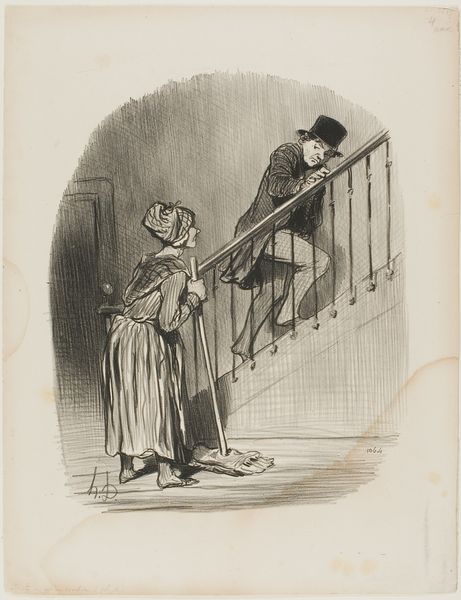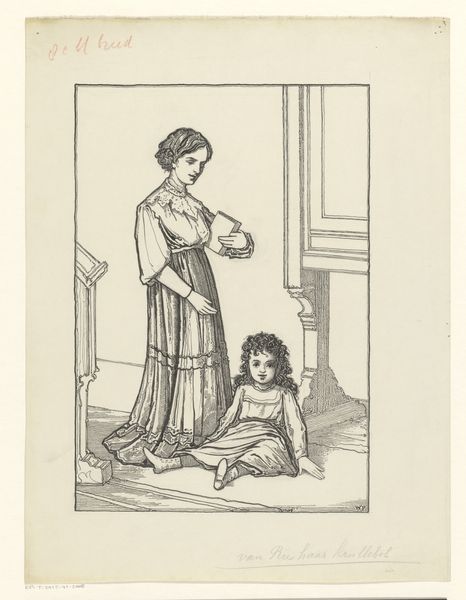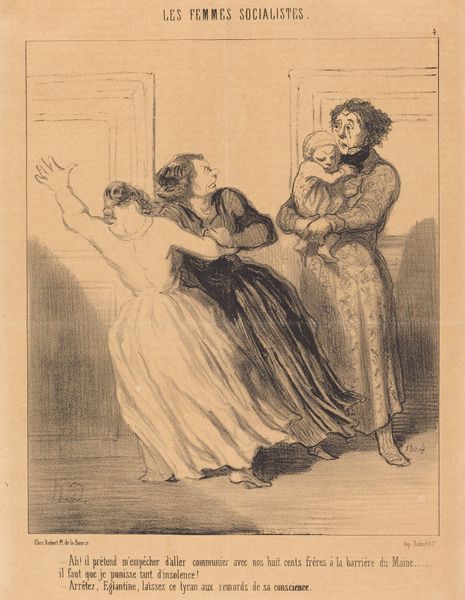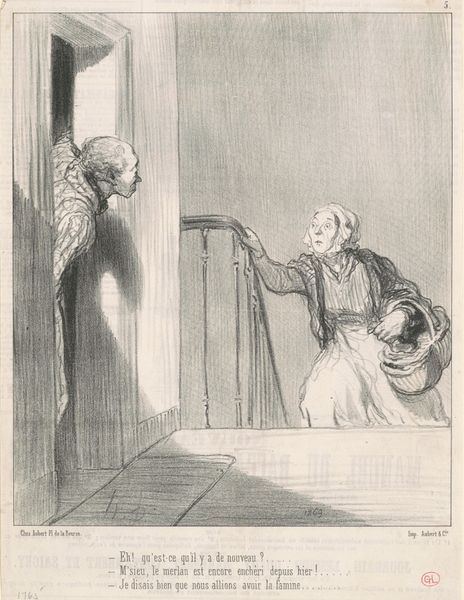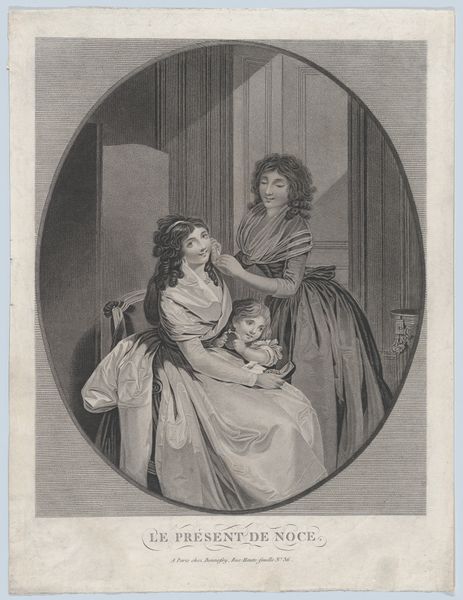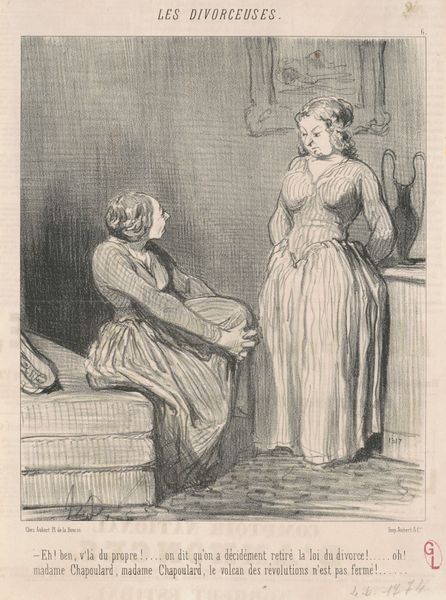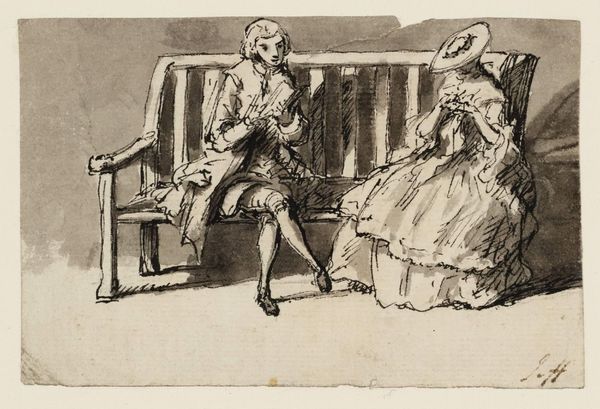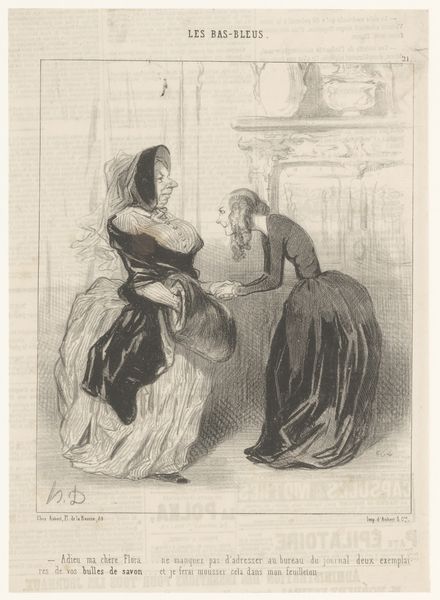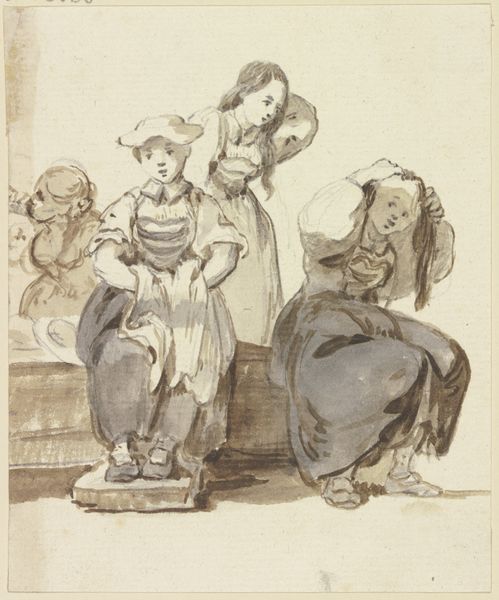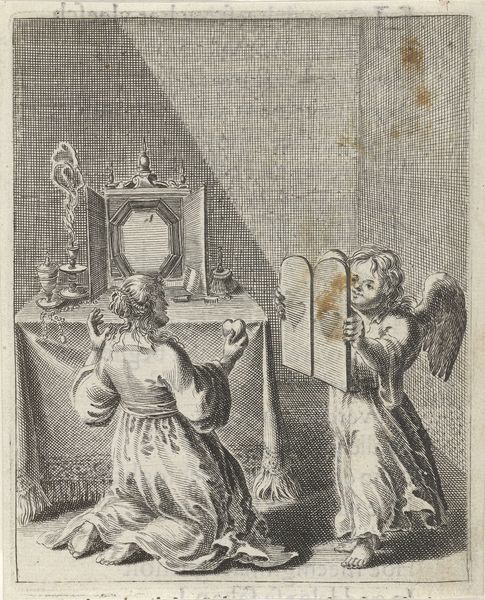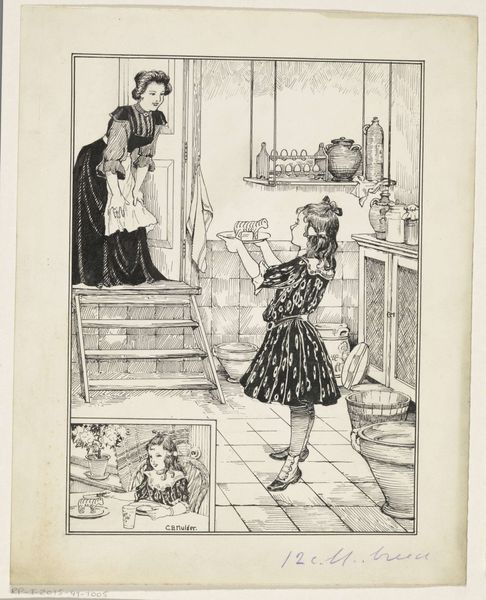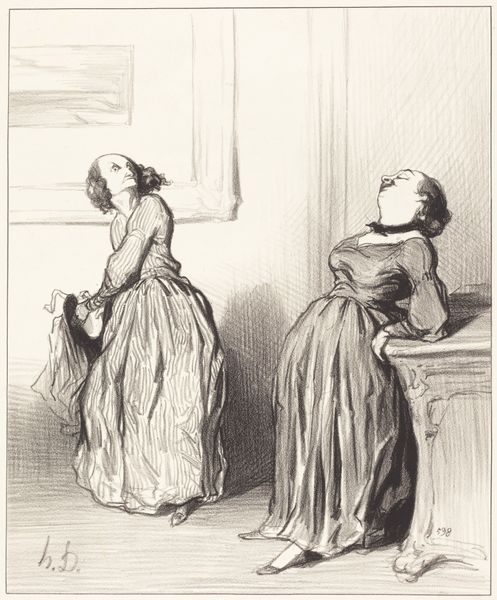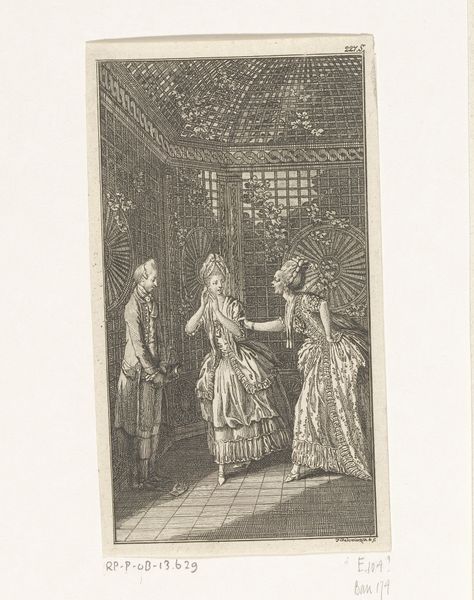
drawing, lithograph, print, pen
#
drawing
#
lithograph
# print
#
caricature
#
figuration
#
romanticism
#
pen
#
genre-painting
Copyright: National Gallery of Art: CC0 1.0
Editor: Here we have Honoré Daumier's lithograph from 1844, titled "Au revoir, Ophélia!... ne manquez pas...". It depicts two women, one descending stairs. The expressions feel… cutting, satirical. How do you interpret this work? Curator: I see a sharp critique of the intellectual pretensions of the bourgeoisie, particularly women. Daumier titles it with a sarcastic "Goodbye, Ophelia! Don’t fail to come on Tuesday evening... we’ll be reading elegies and drinking bishop’s wine." In that light, consider how women's participation in intellectual circles could be seen in 19th-century France. Is it celebratory or is there an undercurrent of skepticism? Editor: I hadn’t considered that it was critical. I thought maybe he was just… depicting a mundane social interaction. So the Ophelia reference – is it poking fun at the woman on the stairs, implying she's overly dramatic or sentimental? Curator: Precisely. Think about Shakespeare’s Ophelia, driven mad by circumstance. By using her name, Daumier links these women to notions of feminine hysteria and irrationality, while also lampooning their supposed intellectual pursuits. The title "Les Bas Bleus"—French for "bluestockings"—itself was often used disparagingly. This print operates within a larger cultural narrative, then, of policing women's roles in intellectual and social spheres. Editor: I see. So it's not just a funny drawing, but a commentary on gender roles and intellectual life. What do you make of the differing expressions of the figures? Curator: The expressions add another layer of complexity. The descending woman’s self-important gaze contrasts with the upward looking woman’s, who may reflect deference or perhaps disguised cynicism. This is, ultimately, about the politics of performance and social positioning within bourgeois society. How does recognizing the historical and social context change your initial response? Editor: It makes me appreciate the artwork on a deeper level, beyond just the surface of the image. Curator: Exactly! It is a great lesson for how we view all artwork in historical context.
Comments
No comments
Be the first to comment and join the conversation on the ultimate creative platform.
